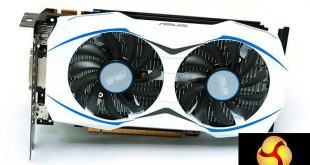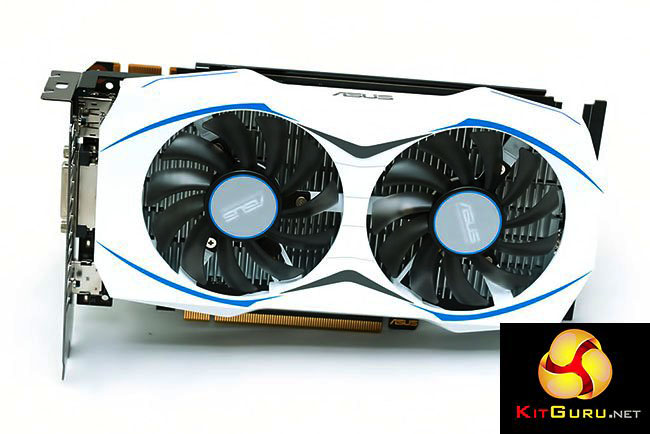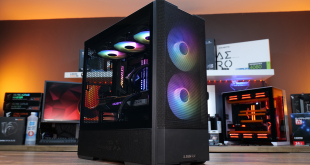
Back in early 2014 Nvidia first demonstrated its Maxwell architecture, based on a 28nm process, and in unorthodox fashion the first graphics card to emerge was the low-power GTX 750 Ti. It wasn't until later on that year that Maxwell was rolled-out to the high performance segment, with the GTX 980.
It's now mid-2016 and the GTX 750 Ti is still a current product as it serves a market segment that no other graphics card serves in quite the same way. The GTX 750 Ti offers reasonable 1080p gaming capability while being entirely motherboard-bus powered – no additional power cables are required resulting in a sub-75W TDP.
In practice this means systems that are difficult to modify, such as OEM pre-builds or systems with weak power supplies, can make a reasonable step up from low-performance integrated graphics or other graphics solutions. AMD has no direct answer to the GTX 750 Ti since its fastest bus-powered graphics card, the R7 250, falls about 50% short in performance terms.
The unofficial successor to the GTX 750 Ti has come in the form of low power “6-pin-less” GTX 950s. ASUS delivers its version in the form of its GTX 950-2G. While not ground-breaking in design or performance, this quirky product should appeal to the same audience as the GTX 750 Ti – which is surprisingly large.
According to Steam's June 2016 survey results the GTX 750 Ti had 4.19% in the DX11 and DX12 categories. For context, that's almost twice AMD's entire R9 200 series (R9 295X2, R9 290X, R9 290, R9 285, R9 280X, R9 280, R9 270X, R9 270) which records 2.27% in Steam's statistics for the same DX11 and DX12 categories.
| GPU | GeForce GTX 950 | ASUS GTX 950-2G | GeForce GTX 750 Ti |
| Streaming Multiprocessors | 6 | 6 | 5 |
| CUDA Cores | 768 | 768 | 640 |
| Base Clock | 1,024 MHz | 1,026 MHz | 1,020 MHz |
| GPU Boost Clock | 1,188 MHz | 1,190 MHz | 1,085 MHz |
| Total Video memory | 2GB | 2GB | 2GB |
| Texture Units | 48 | 48 | 40 |
| Memory Clock | 6,600 MHz | 6,612 MHz | 5,400 MHz |
| Bus Width | 128-bit | 128-bit | 128-bit |
| ROPs | 32 | 32 | 16 |
| Manufacturing Process | 28nm | 28nm | 28nm |
| TDP | 90 W | 75 W | 60 W |
ASUS and the other vendors making similar low power GTX 950s haven't made it clear about whether the low power GTX 950 GPU is any different to a normal GTX 950,though there's no evidence to suggest it is any different. As such it can be thought of as a GTX 950 constrained to a 75-Watt TDP, rather than the usual 90-Watts.
That 17% reduction in TDP should have a resultant impact on performance, even so a GTX 950 operating at a slight performance penalty should be able to outperform a GTX 750 Ti.
 KitGuru KitGuru.net – Tech News | Hardware News | Hardware Reviews | IOS | Mobile | Gaming | Graphics Cards
KitGuru KitGuru.net – Tech News | Hardware News | Hardware Reviews | IOS | Mobile | Gaming | Graphics Cards




Curious timing for this review with the low power RX cards due soon. It would be good to see a follow up review comparing this to those.
Unfortunately people buying this card will be building on a budget and won’t be running watercooled intel i7’s on an SSD with 32gb of high speed DDR4 ram, meaning the results will be VERY different for them.
I know it has been reviewed this way to show the cards true potential without any bottlenecking, but if anybody sees these results, then buys the gpu to pair with their £60 stock cooled amd processor and 4gb of RAM, running on a 7200rpm HDD disk then they are going to be devastated when they get massively worse results.
Personally, i’d rather see GPU’s tested in the average setup they will be expected to be bought for.
Thanks for the feedback, it is a tricky situation – keeping a test bench consistent between a wide range of products (as low as R7 360 but as high as R9 390) but also needing to make sure it matches the target audience for a given product, such as in this case. Having test benches that reflect different price points (low-mid range, mid to high-end) is something I’ll (re)consider going forward as I have done this before in my reviewing career.
Definitely, we’ll try and take a look at as many new products as possible including anything new from AMD in the same power/performance segment.
Definitely something i’d look forward to seeing. I would also find it very interesting to see how much of a bottleneck a budget setup vs a test rig like this would be, but that also doubles the amount of work required for a review.
Either way, it is a very good review, and I like seeing the lower end products getting highlighted.
Thanks for the response Ryan.
I am earning around 6000-8000 dollars a month for freelancing i do from my home. For everybody prepared to do simple online jobs for few hours a day from your couch at home and make solid payment while doing it… Try this work SELF90.COM
I’m running an Elsa GTX 950 2GB (Great Japanese brand, no power connector) on a 10 year old Asus P5 Mobo Win 10 X64 Pro with a Q9650 and 8gb cheapo ram (Nanya PC2-6400 DDR2-SDRAM) and it runs Doom 2016 Vulkan on medium at ~45fps. No Mans Sky, XCOM 2 also perform really well on medium settings. Bear in mind it’s running in a PCI Express 1.1 slot too.
I had an Asus GTX 750Ti in there but it started going crazy with the fan going on and off, and I found this Elsa 950 in Akihabara going really cheap. Knocks the 750Ti out of the park.
I think it’s this one: http://www.elsa-jp.co.jp/products/products-top/graphicsboard/geforce/midrange/geforce_gtx950_2gb/